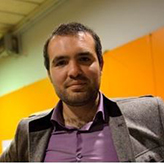Our nearest neighbours? The astonishing discovery of exoplanet Proxima b
![Artist’s visualisation of Proxima Centauri from the surface of Proxima b Copyright [2016] by ESO.](/spcs/media/qmul/research/ow3-research/Proxima-b-1000-800x519.jpg)
In collaboration with
In 2016, researchers at Queen Mary discovered an exoplanet, Proxima b, orbiting our nearest star, Proxima Centauri.
An exoplanet is a planet outside our own solar system. This is the closest such planet ever discovered, and furthermore, it is within the habitable zone in its own solar system, where liquid water can exist. This means it is possible that the planet could harbour life. As a result of this world-altering research, plans are afoot to send unmanned spacecraft to explore Proxima b further.
How do you discover a distant planet?
Scientists use many methods to detect planets outside our solar system. One typical method is the radial velocity or Doppler method. The researcher hunts for shifts in the light of the host star, which can give evidence of the presence of a planet.
Dr Anglada-Escudé has long-standing expertise in exoplanet hunting. Before he joined Queen Mary, he worked to increase the precision of this technique by developing new algorithms.
He developed a new method, Template-Enhanced Radial velocity Re-analysis Application (TERRA).This method has been used to analyse data from the world’s most precise radial velocity instrument, the European Southern Observatory’s High Accuracy Radial velocity Planet Searcher, or HARPS, via the ‘HARPS-TERRA’ software tool.
Anglada-Escudé’s research at Queen Mary focused on combining archival data with new observations made using his TERRA technique.
A global network of telescopes
Anglada-Escudé used the HARPS-TERRA framework to search for exoplanets around the nearest star to our own: Proxima Centauri.
He used several smaller telescopes around the world alongside HARPS. This network of telescopes monitored the star system continuously for two months, logging results at the same time each evening.
Anglada-Escudé named the project ‘Pale Red Dot’. The project culminated in August 2016 with the discovery of Proxima b.
Once there [near Proxima b], the nanocraft could image any planets discovered in the system, test for magnetic fields and organic molecules, and send the data back to Earth in another laser beam.— The late Stephen Hawking, Breakthrough Starshot co-founder
Changing international science policy
The discovery caused the European Southern Observatory (ESO) to reconsider the way it allocated telescope time. The ESO now allows researchers to obtain short time slots at similar times each night. This was a crucial factor in the discovery of Proxima b and can aid scientists in completing their research.
They have also increased their interaction with the public, including participating in Reddit ‘ask me anything’ (AMA) sessions for new campaigns, as well as traditional press conferences. This allows the scientists to explain their results and engage directly with the public.
Cultural impact
Both because of the dramatic nature of the discovery and his own public engagement via his blog, Anglada-Escudé's discovery has engaged a large, diverse audience with astronomy, and advanced public debate about extraterrestrial life.
In 2017, Anglada-Escudé was listed as one of Time magazine’s ‘100 most influential people of the year’ and the find was front page news around the world. The discovery of Proxima b has inspired music, science fiction and video games.
Inspiring and accelerating private space exploration
Informed and influenced by Anglada-Escudé’s work, great progress has been made in planning space exploration. The ‘Breakthrough Starshot’ programme was founded by Yuri Milner, Mark Zuckerberg and Stephen Hawking in 2016.
Breakthrough Starshot aims to develop proof-of-concept tiny nanocraft (‘StarChips’), which would be able to travel to the Alpha Centauri system to seek evidence of life. The late Stephen Hawking confirmed that the StarChips should take 20 years to reach Proxima b (at 20% of the speed of light).
They hope to build a privately-funded prototype system costing between US$500,000,000 and US$1,000,000,000 and to send the first probes in 2036.
Breakthrough Watch
In January 2017, Breakthrough Initiatives signed an agreement with the European Southern Observatory to collaborate on a multi-million-dollar astronomical programme, ‘Breakthrough Watch’, to hunt for other planets in the Alpha Centauri system.
Observations began in May 2019. Breakthrough Watch brings funding and expertise, which will advance the design of space-based and extra-large ground-based telescopes. This will lead to huge advances in astronomical discovery.
Schools, institutes and research centres
School of Physics and Astronomy
Throughout its 100 year history, the School of Physics and Astronomy has brought people together to foster world-changing discoveries. From trailblazing work on the structure of the atom, to the international collaboration jointly responsible for the Nobel Prize-winning discovery of the Higgs boson, our discoveries capture headlines and showcase the diversity of our expertise and the breadth of our collaborations.

